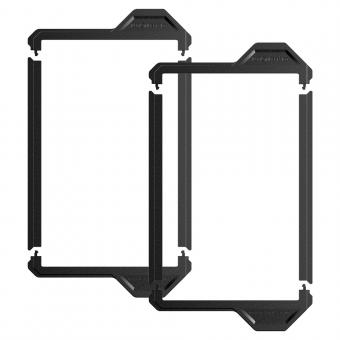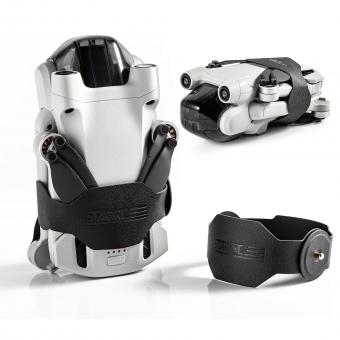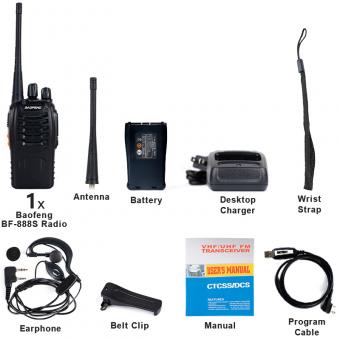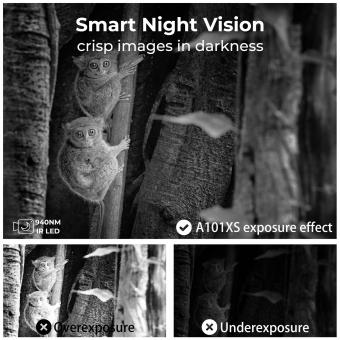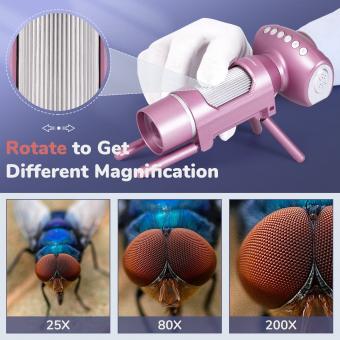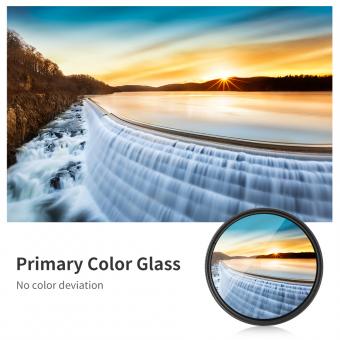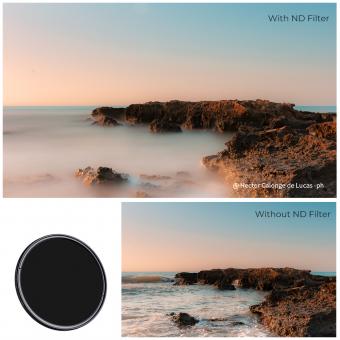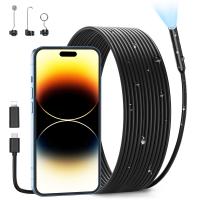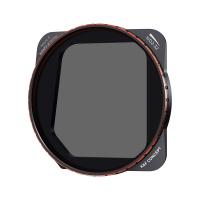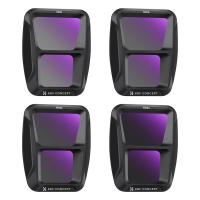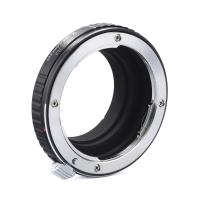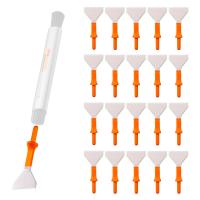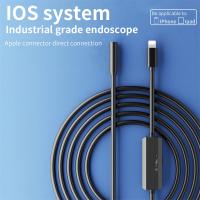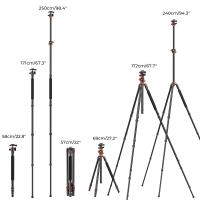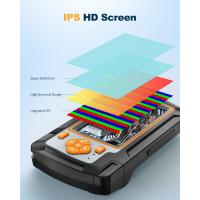Can Microscopes Damage Your Eyes ?
Microscopes themselves do not typically cause direct damage to the eyes. However, prolonged and improper use of microscopes can potentially strain the eyes and lead to discomfort or temporary vision problems. It is important to use microscopes in a well-lit environment, take regular breaks, and ensure proper positioning and focus to minimize eye strain. Additionally, some microscopes emit intense light, such as laser microscopes, which can be harmful if directly exposed to the eyes. Therefore, it is crucial to follow safety guidelines and use appropriate protective measures, such as wearing safety goggles, when working with certain types of microscopes.
1、 Potential eye damage from improper use of microscopes
Potential eye damage from improper use of microscopes
Microscopes are powerful tools that allow us to observe objects and organisms at a microscopic level. While they are generally safe to use, improper use of microscopes can potentially lead to eye damage.
One of the main concerns with using microscopes is the intensity of the light source. Microscopes often have a bright light that is focused on the specimen being observed. Prolonged exposure to this intense light can cause eye strain, fatigue, and even damage to the retina. It is important to use microscopes in a well-lit room and to take breaks to rest the eyes.
Another potential risk is the incorrect adjustment of the microscope's focus. If the microscope is not properly focused, it can cause eye strain and discomfort. It is crucial to follow the manufacturer's instructions and guidelines for adjusting the focus and to avoid forcing the focus knobs.
Additionally, some microscopes use lasers as a light source. Laser light can be harmful to the eyes if not used properly. Direct exposure to laser light can cause permanent damage to the retina. It is essential to use caution and follow safety guidelines when working with laser-equipped microscopes.
It is worth noting that advancements in microscope technology have led to the development of safer and more user-friendly models. Many modern microscopes have built-in safety features, such as adjustable light intensity and automatic shut-off mechanisms, to minimize the risk of eye damage.
In conclusion, while microscopes themselves do not inherently damage the eyes, improper use can potentially lead to eye strain, fatigue, and even permanent damage. It is crucial to use microscopes in a well-lit environment, take breaks to rest the eyes, and follow safety guidelines provided by the manufacturer. By using microscopes responsibly, the risk of eye damage can be minimized.
2、 Safety precautions to prevent eye injury while using microscopes
Safety precautions to prevent eye injury while using microscopes
Microscopes are powerful tools that allow us to observe and study objects at a microscopic level. While they are generally safe to use, it is important to take certain precautions to prevent eye injury.
Firstly, it is crucial to ensure that the microscope is properly set up and adjusted before use. This includes adjusting the focus and lighting to avoid straining your eyes. Additionally, make sure that the microscope is placed on a stable surface to prevent accidental falls or movements that could potentially harm your eyes.
Another important precaution is to always wear appropriate eye protection, such as safety goggles or glasses, while using a microscope. These protective eyewear can shield your eyes from any potential debris or chemicals that may be released during the observation process.
Furthermore, it is recommended to take regular breaks while using a microscope to prevent eye strain. Prolonged use can cause eye fatigue and discomfort, so it is important to give your eyes a rest every 20-30 minutes by looking away from the microscope and focusing on distant objects.
In terms of the question of whether microscopes can damage your eyes, it is generally considered safe to use microscopes as long as proper safety precautions are followed. However, it is worth noting that staring directly into the intense light source of some microscopes for extended periods of time can potentially cause damage to the eyes. Therefore, it is important to avoid direct exposure to bright light and to use appropriate filters or adjust the lighting settings to reduce the risk of eye damage.
In conclusion, while microscopes themselves do not inherently damage your eyes, it is important to take safety precautions to prevent eye injury. This includes proper setup and adjustment of the microscope, wearing protective eyewear, taking regular breaks, and avoiding direct exposure to intense light sources. By following these guidelines, you can safely use microscopes for scientific exploration and research.
3、 Understanding the risks of prolonged microscope use on eyes
Understanding the risks of prolonged microscope use on eyes
Microscopes are powerful tools that allow us to observe and study objects at a microscopic level. While they are incredibly useful in various fields such as biology, medicine, and research, it is important to be aware of the potential risks associated with prolonged microscope use on the eyes.
One of the main concerns is eye strain. Staring through a microscope for extended periods can cause eye fatigue, leading to symptoms such as dryness, redness, and blurred vision. This is particularly true when using microscopes with high magnification levels, as the eyes need to constantly adjust and focus on the tiny details.
Another risk is the potential for damage to the retina. Microscopes emit intense light, and if the eyes are exposed to this light for a prolonged period, it can potentially harm the delicate cells of the retina. This is especially true when using microscopes with high-intensity illumination sources, such as lasers.
However, it is important to note that modern microscopes are designed with safety features to minimize these risks. Many microscopes now come with adjustable eyepieces and ergonomic designs to reduce eye strain. Additionally, some microscopes have built-in filters to protect the eyes from excessive light exposure.
It is also recommended to take regular breaks during microscope use to give the eyes a rest. Looking away from the microscope and focusing on distant objects can help relax the eye muscles and reduce strain.
While the risks of prolonged microscope use on the eyes exist, they can be mitigated by using proper safety measures and practicing good eye care habits. It is always advisable to follow the manufacturer's guidelines and consult with experts in the field to ensure safe and healthy microscope use.
4、 Impact of microscope light intensity on eye health
Microscopes are powerful tools that allow us to observe objects at a microscopic level. However, there is a common concern about whether microscopes can damage our eyes. The short answer is that microscopes themselves do not typically cause direct damage to the eyes.
Microscopes use lenses to magnify objects and light sources to illuminate them. The light intensity emitted by microscopes can be adjusted to suit the user's needs. It is important to note that excessive exposure to intense light, regardless of its source, can potentially harm the eyes. Prolonged exposure to bright light can cause temporary discomfort, eye strain, and fatigue. However, modern microscopes are designed with safety features to prevent excessive light exposure.
The impact of microscope light intensity on eye health has been a topic of research and discussion. Studies have shown that prolonged exposure to intense light can lead to retinal damage, particularly in animal models. However, these studies often involve much higher light intensities than those typically used in microscopy.
The latest point of view suggests that while it is important to be cautious and avoid prolonged exposure to intense light, the light intensity used in microscopes is generally considered safe for short-term use. It is recommended to take regular breaks and adjust the microscope's light intensity to a comfortable level to minimize eye strain.
In conclusion, microscopes themselves do not typically cause direct damage to the eyes. However, excessive exposure to intense light can potentially harm the eyes. It is important to use microscopes responsibly, take breaks, and adjust the light intensity to ensure eye health and comfort.






